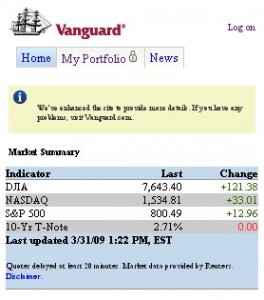Mobile Sites – Not Dead Yet!
We reviewed a dozen Web sites recently through our smartphone browsers. Most experiences were bad. If you’re considering improving your firm’s mobile experience we have three quick ideas:
- Redirect users to a .mobi site – most homepages were developed for a computer browser and don’t fit well on a small screen. Some firms do an elegant job of redirecting the user to a DOT MOBI site configured for mobile devices. That is a great experience.
- Make it lean – place only the most sought after and direct information on a mobile site. Usually, that means bringing users to price & performance or bulleted commentary.
- Make it shareable – make it easy for the user to send a link directly to the mobile site. Many users will look something up on your mobile site only to share it with a colleague or client. It’s not easy in a smartphone to “cut URL, tab to Outlook, create new mail, paste URL.” Make this simple through your mobile site (even if the user wants to mail himself).
Your clients and prospects value having a presentable mobile Web site – render a price/performance information, product profiles, and some commentary quickly.







